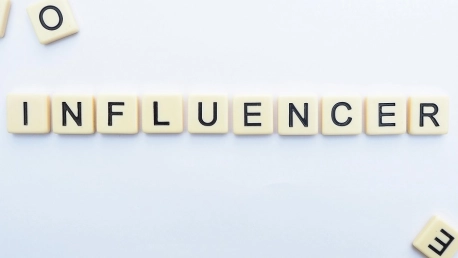As the COVID-19 pandemic spread across the globe, causing problems for governments, businesses, and individuals alike. Furthermore, marketers everywhere were also faced with multiple issues. From finding the right marketing strategies during a global pandemic to building a good framework and creating the best content, these obstacles are more complicated than ever before.. However, during these uncertain times, one thing remains unchanged – influencer marketing is still booming. Although consumer habits have changed since the onset of the crisis, and strategies have been adjusted, influencer marketing remains one of the best tools in digital marketing.
In fact, the size of the global influencer marketing market has almost doubled since 2019, with the market currently being valued at a record $13.8 billion, according to Statista. While the marketing industry is becoming more and more competitive, and the healthcare crisis is also fueling rivalries within various industries, brands have come to rely increasingly on their collaborations with influencers. These partnerships with well-known content creators help brands connect with large potential audiences. Influencers are not only known for their strong engagement rate, but also for their ability to increase brand awareness and reach, while simultaneously building and expanding credibility.
Building Credibility and Trust
Although increasing brand awareness is important, building credibility and trust is especially important during uncertain times. There’s no surprise that recommendations made by trusted public figures can help improve a brand’s image and credibility. For a new brand, celebrity endorsement is especially crucial in growing brand awareness and building trust. Influencers can provide positive reviews of brands and products that can improve credibility and trust, while also exposing those brands and products to new audiences. This is the main reason that influencer marketing spending in the US is expected to grow by more than 30% in 2021, according to Insider Intelligence.
Influencer marketing spending in the US is actually estimated to reach an all-time high of $3.7 billion this year, based on Statista figures. As a provider of market and consumer data, Statista goes on to list some of the key advantages of influencer marketing, like how it can increase revenues for companies of all sizes. Furthermore, recommendations from social media influencers are now known to impact shopping behavior for millions of online users worldwide. With influencers now boosting credibility and trust, driving engagement, and having the potential to disrupt shopping habits for millions of global users, it comes as no surprise that influencer marketing spending is on the rise.
Peering into the Future
Another key feature of influencer marketing in the US and abroad is the continuous evolution and development of each segment of digital marketing. From new digital platforms created to attract both talent and brands to new digital creators, influencer marketing seems to be always peering into the future. In fact, according to a new report, as much as 40% of the entire global population is now creating content one way or another. Content creators are now writing blog posts, tweeting, creating Facebook and Instagram posts and stories, making music, creating YouTube videos, podcasting, and even streaming their video game playing.
While some of these users are using the available platforms as a way of spending their free time, others will go on to become micro-influencers. The good news for them is that brands seem to prefer micro-influencers because they have strong engagement rates (ER). According to Influencer Orchestration Network (ION), micro-influencers have an average ER of 3.86% on Instagram, while mega-influencers average 1.21%. The numbers are very much alike on YouTube, where micro-influencers have an average ER of 1.64%, and mega-influencers have only 0.37%. Moreover, this difference seems to be growing on newer platforms like TikTok, where the micro-influencers’ ER is nearly 18%, while the mega-influencers average is a lowly 5%.
What the Future Holds
Although influencer marketing spending is growing, and new platforms and content creators appear every year, it still has a long way to go before it can be compared to social network advertising. This year alone, social media ad spending in the US will probably reach $58.66 billion. However, as marketers struggle to find new ways of overcoming the healthcare crisis and its effects, influencer marketing has a good chance of seeing this boom continue.









